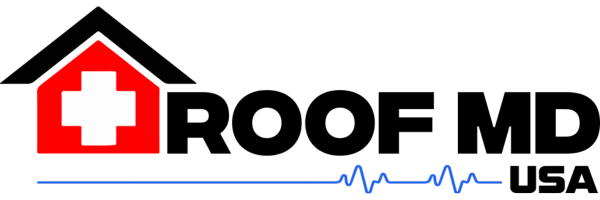Understanding the factors that lead to roof leaks can help you prevent costly damage to your home. In Roswell, GA, local weather significantly influences these issues. This blog will explain the specific weather conditions that contribute to roof leak causes and provide helpful tips to address them.
How Rainfall Affects Roof Leak Causes
Roswell, GA, experiences significant rainfall, which can lead to water seeping through weak spots in your roof. Consistent exposure to moisture can deteriorate roofing materials, leading to leaks.
When rain is frequent and heavy, it can exacerbate even minor issues in your roofing. Tiny cracks or gaps that may have seemed insignificant could become pathways for water to infiltrate your home. Regularly inspecting your roof for these small vulnerabilities is essential in a rainy climate.
Moreover, the cumulative effect of rainfall over time can lead to water damage. Simply put, the more it rains, the more your roof will wear down if not adequately maintained. Be proactive with roofing inspections, especially after prolonged rainy periods.
Additionally, rainwater can pool on flat roofs or in depressions, creating an environment conducive to leaks. Ensuring proper drainage through well-maintained gutters and downspouts helps in directing water away from your roof’s surface.
Impact of Humidity on Roof Integrity
High humidity levels can cause mold and mildew to grow under your roof shingles, compromising the structure and leading to potential leaks. Humid conditions also contribute to the decay of wooden roofing elements.
When the air is filled with moisture, it doesn’t just affect the outdoor surfaces. This humidity can penetrate rooftops, creeping into the attic and promoting the growth of mold and mildew. These fungi can eat away at wooden beams and weaken the structural integrity of your roof.
The persistent presence of humidity can also cause condensation to form on the inner surfaces of your roof. Over time, this can lead to wood rot and the weakening of other structural components, making your roof more susceptible to leaks.
Routine checks for signs of mold and mildew inside your home, particularly in the attic, can help mitigate the damaging impact of high humidity levels. Early detection and treatment can prevent minor issues from escalating into significant problems.
Damage from Strong Winds
Strong winds, common in thunderstorms experienced in Roswell, GA, can lift or damage shingles, making it easier for water to penetrate and cause leaks. Secure all roofing materials properly to mitigate this risk.
High winds can exert a lot of pressure on your roof, potentially lifting shingles and creating gaps. Once these gaps form, water can easily seep in, even during minor rain showers, leading to leaks.
Beyond just lifting shingles, strong winds can also cause flying debris to hit your roof, resulting in physical damage. This can range from minor scrapes and bruises to significant punctures that make your roof vulnerable to water infiltration.
Inspecting your roof after a windstorm is a prudent step to identify and address any damage immediately. This not only helps in managing potential leak causes but also ensures the overall longevity of your roofing materials.
Effects of Hailstorms
Hail can damage shingles by breaking or pitting them, creating entry points for water. Regular roof inspections post-hailstorm can help detect and repair such damages early.
The severity of hailstorm damage largely depends on the size and speed of the hailstones. Even small hailstones can cause significant wear and tear, gradually weakening your roof’s defenses against leaks.
After a hailstorm, it’s essential to conduct a thorough inspection of your roof. Look for signs like dents, cracks, or missing granules on the shingles, as these are indicators of damage that could potentially lead to leaks if left unaddressed.
Professional roofing assessments after major hailstorms can provide a comprehensive evaluation of the damage. Addressing any issues promptly can prevent minor damages from escalating into costly repairs.
Temperature Fluctuations and Roof Wear
Roswell’s temperature swings can cause roofing materials to expand and contract, leading to cracks and compromising their integrity. This wear and tear can eventually result in leaks if not addressed timely.
Temperature fluctuations can have a pronounced effect on different roofing materials. For instance, asphalt shingles may become brittle and crack in cold weather, while heat can cause them to soften and warp.
Moreover, the cycle of freezing and thawing can worsen tiny cracks in your roof. As water seeps into these cracks and freezes, it expands, causing the cracks to widen. Over time, this can lead to significant damage.
Ensuring your roof is equipped to handle these temperature variations can mitigate the risk of leaks. Using materials designed to withstand Roswell’s specific climate conditions can provide added protection.
The Role of Snow and Ice
Although not frequent, snow and ice can accumulate and create ice dams, blocking water from draining properly. This can cause leaks as the water is forced under the shingles or other roofing materials.
Ice dams are particularly troublesome because they trap water on your roof. When this water has no way to escape, it can seep into even the smallest of gaps, eventually finding its way into your home.
To prevent ice dams, ensure your attic is well-insulated and ventilated. A warm attic can cause snow on the roof to melt too quickly, leading to the formation of ice dams when the water refreezes.
Being proactive is crucial during the winter months. Regularly removing snow build-up from your roof and gutters can prevent the conditions that lead to ice dams and subsequent leaks.
Wrapping It Up
Weather plays a crucial role in the integrity of your roof, especially in Roswell, GA. By understanding the various weather conditions that can cause roof leaks, you can take preventive measures to maintain your roof in good condition. Regular inspections and timely repairs can save you from costly damage down the road.


